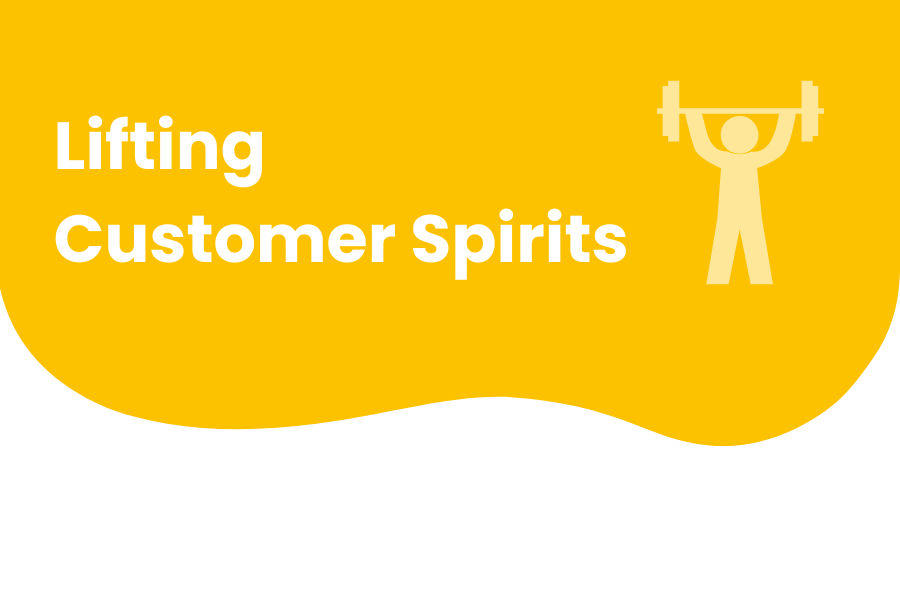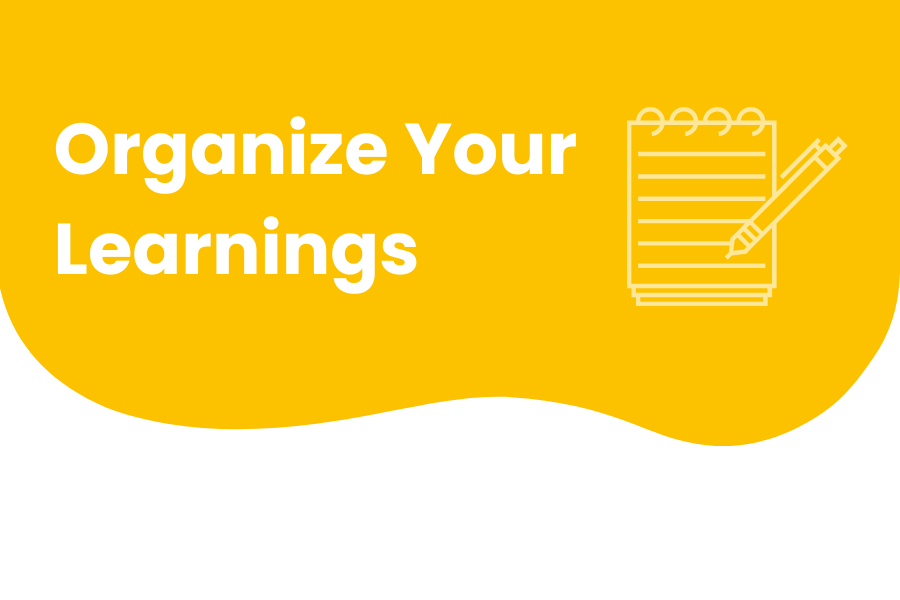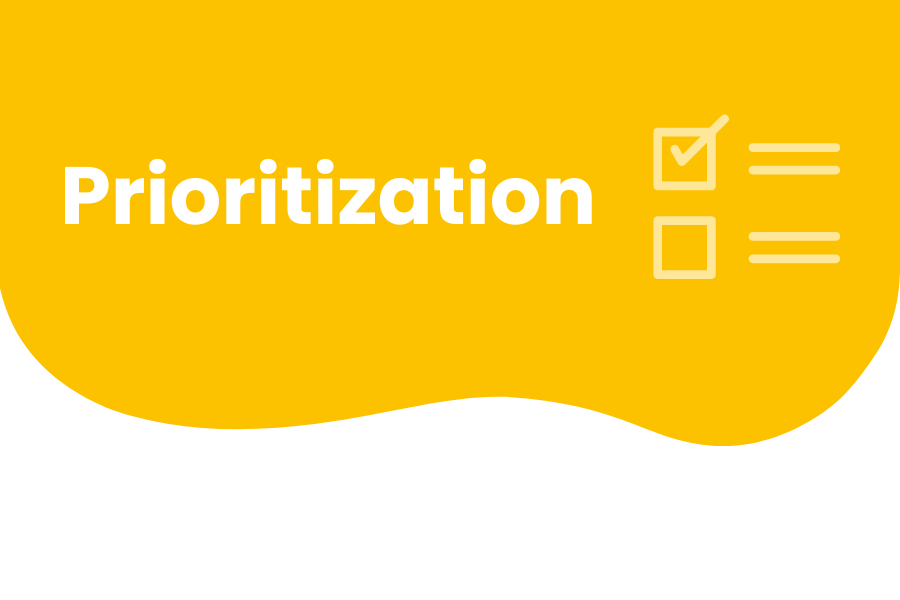Problem Creep and Prioritization

Leaders at purpose driven organizations are always thinking through their priorities. Some lessons from Chenmark can help Small Giants companies prioritize to-do lists to emphasize people and purpose, while still working toward organizational goals and making impactful decisions. Reflect on your priorities and distractions as you read on!
Visit the original Chenmark blogs Problem Creep and Camembert, Middling Priorities, and We Like Ike…’s Matrix.
Problem Creep and Camembert
A couple of months ago, our sweet 87-year-old grandmother was en route to a family gathering. Being a gracious guest, she brought along a ceramic cheese dish and a nice round of Camembert cheese for the host. Unfortunately, when going through airport security, the Camembert was confiscated because it was deemed to be a “liquid.” Needless to say, Grandma was pretty perplexed. Any reasonable person could see a) it was cheese (she even offered to eat it!), and b) the cheese posed no threat to national security.
Observing this type of Monty Python-esque airport security situation is exactly what led Harvard psychologist David Levari to conduct formal research on the topic, specifically, to find out if the human brain searches for problems even when problems become infrequent or don’t exist. Michael Easter’s book, The Comfort Crisis: Embrace Discomfort To Reclaim Your Wild, Happy, Healthy Self, provides some more context:
“Obviously the phrase better safe than sorry applies here. ‘But we wondered’, said Levari, ‘if all of a sudden people stopped bringing stuff that wasn’t allowed into the airport and the luggage screens never went off, would the TSA just relax and do nothing?’ They didn’t think so. ‘Our intuition was that the TSA would do what most of us would do,’ he said. ‘When they ran out of stuff to find they would start looking for a wider range of stuff, even if this was not conscious or intentional, because their job is to look for threats.'”
In one of Levari’s studies, subjects were asked to categorize hundreds of pictures of people into “threatening” and “non-threatening” categories; in another, they were asked to label scientific research studies as either “unethical” or “ethical”. Unbeknownst to the participants, the number of “threatening” and “unethical” items purposefully dwindled as the study progressed. Unfortunately, as the actual number of threatening faces and unethical research proposals became significantly less frequent, the participants’ categorizations did not — they just began to perceive neutral faces as threatening and ambiguous research proposals as unethical. Easter again:
“He [Levari] called this ‘prevalence-induced concept change.’ Essentially ‘problem creep.’ It explains that as we experience fewer problems, we don’t become more satisfied. We just lower our threshold for what we consider a problem. We end up with the same number of troubles. Except our new problems are progressively more hollow. So Levari got to the heart of why many people can find an issue in nearly any situation, no matter how good we can have it relative to the grand sweep of humanity. We are always moving the goalpost. There is quite literally, a scientific basis for first world problems.”
In the world of small and midsized companies, there are always problems: a missed deadline, a dirty uniform, a scathing online review, a no-call no-show, a lost contract, a late payment, a data entry problem, mechanical issues, soft demand, overbearing regulations, an unreasonable landlord, bad weather, miscounted inventory, cost-overruns, the list goes on (and on). And that was just this week!
In our experience, a big part of effective leadership is knowing what battles to fight, and when. If we run around trying to fix every single problem we will make ourselves (and our team) crazy. It’s easy to lose common sense and end up confiscating cheese. Levari’s research is a good reminder that we don’t need to make life harder on ourselves by worrying about both actual problems as well as perceived ones.
So, how do we avoid lowering our problem threshold? It starts with self-awareness and ends with having others hold us accountable to not becoming prima-donnas who complain about everything. On a personal level, we have found some type of mindfulness practice and thoughtful prioritization (more on that below) to help.
Middling Priorities
As student-athletes in college, we thought we were very busy.
Then we graduated and started working in finance, and we thought we were busy.
Then we started our own business and realized that dealing with random HR issues on Friday nights made us busy.
Then we had kids and realized we had no idea what we were talking about.
But now that we had a business and kids, we were definitely, undoubtedly, busy.
Then our business grew a lot… and well, there are only so many hours in the day. It was clear things reached a breaking point. We were overwhelmed and were just surviving the onslaught of life’s responsibilities, not thriving in the face of opportunity and challenge.
We quickly realized we had a prioritization issue. As we had taken on new responsibilities, we had not shed old commitments. We decided to prioritize three things: Family, Health, and Chenmark. If something didn’t clearly fit into one of those buckets, we were going to say no. As simple as it sounds, it was difficult to execute. There’s always a compelling reason to stay involved in that non-profit board, attend a social event, or go to an ancillary conference.
On this topic, we recently read Four Thousand Weeks: Time Management for Mortals, which had some thought-provoking insights:
“The third principle is to resist the allure of middling priorities. There is a story attributed to Warren Buffett – although probably in the apocryphal way in which wise insights get attributed to Albert Einstein or the Buddha, regardless of their real source – in which the famously shrewd investor is asked by his personal pilot about how to set priorities. I’d be tempted to respond, ‘Just focus on flying the plane!’ But apparently, this didn’t take place mid-flight, because Buffett’s advice is different: he tells the man to make a list of the top twenty-five things he wants out of life and then arrange them in order, from the most important to the least. The top five, Buffer says, should be those around which he organizes his time. But contrary to what the pilot might have been expecting to hear, the remaining twenty, Buffett allegedly explains, aren’t the second-tier priorities to which he should turn when he gets the chance. Far from it. In fact, they’re the ones he should actively avoid at all costs – because they’re the ambitions insufficiently important to him to form the core of this life, yet seductive enough to distract him from the ones that matter most.”
It’s very easy to say no to things we don’t care about. Eliminating activities that are somewhat important is difficult. That’s because those tend to create the illusion of productivity while in reality, are detrimental to outcomes.
Now that we pared back our list of priorities, we still had to figure out how to prioritize the remaining to-do list items that fit into our core buckets. To do that, we turn to Ike.
We Like Ike…’s Matrix
At some point, we can no longer defer sleep and must think about working smarter, spending more time ‘on’ our business, not ‘in’ our business. While it differs from person to person, we have noticed that most successful people have some sort of framework – whether formal or informal – they use to help them navigate through the plethora of items competing for attention.
One popular framework is the Eisenhower Matrix. Also known as the ‘Urgent-Important Matrix’, this tool helps us figure out what’s important versus urgent. Developed by President Dwight D. Eisenhower, and popularized in Stephen Covey’s 1989 book The 7 Habits of Highly Effective People, the tool helps figure out which tasks to prioritize, and which to either delegate or not do at all.
.png?width=637&height=382&name=Eisenhower%20Matrix%20(Chenmark%20Blog%20Graphic).png)
Generally speaking, small business operators are good at staying out of quadrant 4, and are not spending time mindlessly scrolling social media. However, working on your business involves spending more time in quadrant 2 – doing things like relationship building, workforce training, and strategic planning – most operators are stuck jumping in between quadrant 1 (crises) and quadrant 3 (incessant interruptions with nobody to delegate to).
Interestingly, under-allocation to quadrant 2 is a common issue. For instance, in Covey’s 1996 book, First Things First, he highlighted a group of shopping center managers who all reported that building personal relationships with the owners of the stores in the shopping centers would have a positive impact on their business, something that falls into quadrant 2 – important but not urgent. Upon review, the managers were only spending 5% of their time on this activity, with the rest of the time taking up with seemingly important, quadrant 1, tasks (i.e., meetings and phone calls). Once the managers decided to proactively allocate more time to building relationships with the store owners, their results improved dramatically. Business Insider explains more:
“The main takeaway here is that sometimes you need to take a step back so you can see the disparity between how you should spend your time and how you are spending your time. Then you can make a plan to adjust your schedule so that you allot more time and energy to the activities that will actually produce long-term results, instead of the ones that will produce results five minutes later. As a consequence, Covey says, you’ll end up with fewer Quadrant I activities to deal with: 'Your crises and problems would shrink to manageable proportions because you would be thinking ahead, working on the roots, doing the preventive things that keep situations from developing into crises in the first place.'”
While larger companies have some forcing mechanisms to ensure time is spent on quadrant 2 activities (i.e., meetings with Boards of Directors and/or investors), smaller businesses generally lack such accountability structures. One of the working hypotheses of the Chenmark business model is that, over time, we can create opportunities for our operators to spend more time in quadrant 2, train people to take over quadrant 3 tasks, and minimize the daily crises of quadrant 1. And while it’s very much a work in progress, sometimes Ike’s simple 2 by 2 matrix is all one needs to remind herself that “what is important is seldom urgent and what is urgent is seldom important.”
These practices are a work in progress. It’s not and likely never will be perfect, but being mindful of the proverbial Camembert, focusing on what is truly important to us, and using a prioritization framework has made us more productive - and happier - as a result.





Submit Your Comment